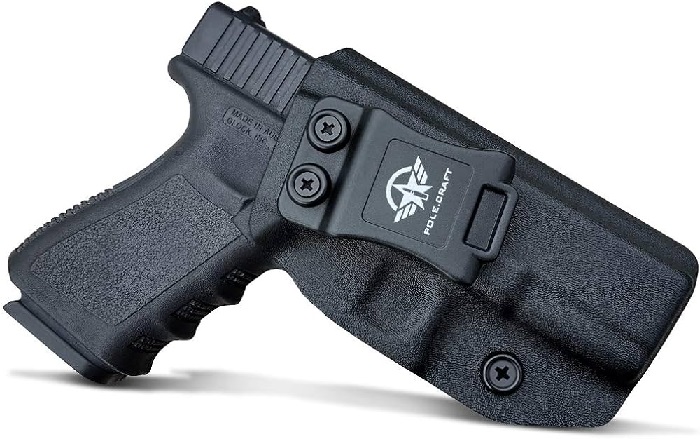
A gun holster is an ideal tool for concealing a weapon. Much attention is directed towards the design and aesthetics of a gun holster, with concealment as the primary goal. However, it is important to also understand what comprises a gun holster before investing your money into buying one.
Different materials are used to make individual parts of a gun holster, which are later assembled to work as one unit. No matter how small or complex it is, every part of a gun holster, as portrayed in this guide, is important in ensuring that your gun holster gives you top-notch service and value for your money.
The Back Plate and Claw
A gun holster is specifically designed to fit a specific type of gun, though at times, the holster may fit a different weapon of similar dimensional specifications. The back plate of a gun holster is the flat inner part that presses and sits against your body. The back plate allows the holster to sit comfortably when carrying a concealed weapon by spreading the pressure over a wide surface area. Most back plates are made of tanned leather for a more skin-adhering feel.
The claw of a Glock 19 concealment holster is an accessory that is designed to allow your gun to sit as close to your body as possible. A holster claw helps reduce the imprint of the gun on your outer body as you walk, which is the main idea behind buying a gun concealment holster.
Holster Pocket and Wedges
Holster pockets are the main part of a gun holster where the gun sits. A holster pocket is designed for a specified type of gun. For instance, a Glock 19 gun holster pocket cannot be used to carry a 9mm revolver gun.
The pockets are often made of strong plastic materials to enhance the holster’s durability. However, custom holster pockets can be made of other materials such as leather, depending on your taste in style.
Gun holster wedges are pocket accessories made of foam, and ensures your concealed weapon holster is firmly pressed against your body. A firm press do increase the comfort and concealment.
It is good to buy a gun concealment holster that has both claws and wedges since the two complement each other in enhancing proper concealment.
Holster Belts and Belt Clips
A holster belt is a leather strap tied around your waist to provide anchorage for you concealed weapons. Glock 19 concealment holster belts have evenly spaced holes and cuts that are specifically designed to allow fitting of belt clips. The buckles around the waistline of your trouser help hold the holster belt firmly on your body.
Holster belt clips, on the other hand, are adjustable accessories that help you clasp your gun holster onto your already fastened holster belt. The clip allows you to adjust both the carrying position and the angle of the concealed weapon. You should ensure that your belt and clips are fastened properly to avoid unnecessary gun movements, and reduce the chances of accidental gun firing.
Other Gun Hardware and Accessories
Different types of gun holsters have different accessories, such as screws and rivets, which hold the back plates and claws in place. For leather holsters, most of the connections are made through sewing and patching. Every gun holster has a safety lock that prevents the gun from falling off of the holster.
Gun pockets have adjustment screws that enable you to correct the gun tension inside the holster accordingly. The gun pockets also have trigger slides that conceal the gun’s trigger, which helps to reduce the chances of accidental firing.
A holster pillow is a padded cushion that sits between your skin and the back plate of a gun holster. The primary function of a holster pillow is to offer comfort and prevent holster imprint marks on your skin.
Conclusion
Before carrying a concealed weapon, ensure that you have the right holster for your gun. Always strive to understand what a gun holster is comprised of and how each part is essential to carry your concealed weapon. Gun safety starts by knowing your weapon and its concealment holster.






